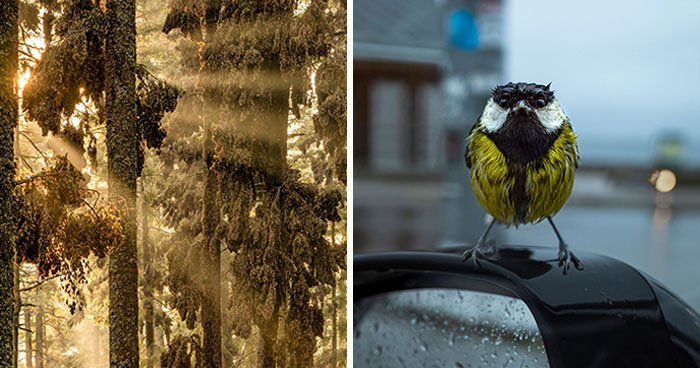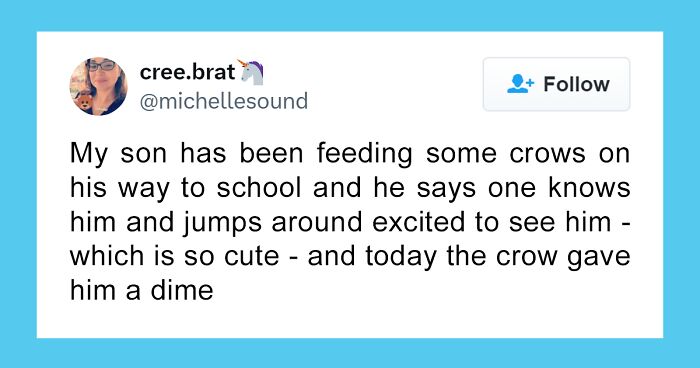
Man Who Works With Bees Documents How Dealing With The Largest Hive He Has Ever Come Across Went
InterviewIf you find that some sneaky bees have been busily building hives inside the walls of your home and don’t know what to do, The Bartlett Bee Whisperer is here to help! David L. Glover runs the insect-friendly bee rescue, removal, and relocation service in the Midsouth US—in West Tennessee, East Arkansas, and North Mississippi. He removes beehives from homes and businesses around 200 times each year; each colony has around 40k bees in it.
David’s rescued bees are given a chance to make the world a bit better and a bit sweeter after being moved. He gives them to nonprofit organizations who then use them in their programs or David uses the bees to repopulate empty hive boxes. That’s a huge boost to local beekeepers who recently suffered colony losses. A week and a half ago, David said that he removed the largest hive that he’s ever come across: all the combs put together came in at a whopping 30 feet!
Scroll down to read Bored Panda’s in-depth interview with David, to learn more about The Bee Whisperer, and to check out the incredible photos from his day-to-day life at work. We wrote about The Bartlett Bee Whisperer last year and it caused quite a buzz. You can check out our earlier article right here.
More info: TheBartlettBeeWhisperer.com | Facebook | Instagram | Twitter | YouTube
The Bartlett Bee Whisperer David Glover shared how he removed the biggest beehive he had ever come across. The story caused quite a buzz
Oh, and bees have been here for at least 50 years. Stephen used to hear them while trying to sleep. They started in the second story deck and are now entering in this gap in the clapboards
I think the bees are sending me a message in braille
Inside the house, the heat signature was promising. I called Julie and presumptuously said we were looking at 8 feet of comb
While I was setting up outside, I started getting the backstory on the bees that had been in the deck around 40-50 years ago…
Because the heat signature showed the hive below the deck, I started up there, removing the clapboards. #ClassyCassie has been sick this week so she missed this show
Today’s construction puts headers on top of the studs. When this house was built, the studs went the length of the walls. The potential for a long hive had just hit me. The cavities to the right of the hive have combs in them also, not as many bees, but combs nonetheless
This was painstakenly slow for me. The nails were as solid as the construction. Tough old house!
The active portion of the hive had a lot of dark comb
This is the local STEM teacher. She was excited to see the bees. They have an observation hive at the school
Does this hive look like a big nosed guy with a cigar in his mouth???
The bottom of the hive. WOW! Look at the color change
Some of the first combs I removed were mostly drone brood. I set them off to the side just in case I needed pieces of them for my game of comb-in-frame Tetris. The frenetically flying bees, robbers (neighboring honey bees seeing an opportunity to get some free food), showed up within minutes of opening the hive
I almost always use plastic foundation as a carrying tray for combs, especially when they are large sections of combs. Photo credits to Mrs. Joey Parker. The sections of comb I was sawing out came from a single piece that was 8 feet tall and as wide as the distance between studs
And another piece of brood comb
The process of removing a hive from a home is simple: 1. Vacuum bees off the face of the comb (the area that will be resting on the plastic foundation) 2. Cut the comb to the appropriate length or height. 3. Catch the comb. 4. Cut the comb to fit into a hive frame. 5. Rubber band the comb in place. 6. Put the frame in a box. 7. Repeat. Somewhere in that process, I need to add a step for “Try not to get stung.”
I repeated that process several times, saving 12 frames of brood combs
See how square those combs are? The bee-engineers made it almost easy for me here
I didn’t remove small sections from the hive. Each piece I cut was large enough to go into 2 frames when halved
Speaking of square combs, I’ve filled up my transfer hive with 10 deep frames of brood combs. Now I’m working on a 5-frame nuc
As I moved up the hive, I noticed dry combs and bees extending further up the wall and some combs going behind me into the deck
I had to remove the bottom of the deck…
to remove those combs
Instead of continuing the removal process working upwards, I started working from the deck down. I had not seen the queen and I didn’t want her hiding where I couldn’t see her
Most of the deck combs were dry. The ones closest to the wall were filled with honey
Working downward on the last comb in this section, I felt confident that the queen was still down here. Tell tale signs and movements from the bees gave me that confidence
I wasn’t disappointed. She was a very dark breed of bee, almost too hard to see on all the dark wood
In the shade and over my transfer hive, I moved the queen into a candied queen cage
The queen and one worker. I added 3 more attendants to the cage and placed it in my pocket for safekeeping
Moving the ladder to the outside, I started exposing the rest of the hive
That is not a look of defeat, but the focused look of a man removing more clapboard. So much for the 8 foot hive
All three sections had more dry combs, but they had all been for honey at one time
Two colonies, two queens, twelve frames of brood, three stings, and a Chick-fil-A sandwich from the youngest Parker (the last to arrive for the show). It was a great day. Done Y’all!
Business has been buzzing
David told Bored Panda that business has been buzzing as of late: “We’ve been able to relocate almost 300 colonies over the last year. We have started working with 3 nonprofits that utilize honey bees in their programs. All 3 are people-oriented. One works to stop human trafficking. The second works with At-Risk Kids and farm animals that have been abused or neglected. The animals and kids are rehabilitated together. Rescued bees fit their program as well as providing honey to sell increasing opportunities for the kids. The third provides 100% of their honey profits to a care facility that cares for individuals whose family caregiver has passed. They use the honey money to purchase equipment that the clients’ insurance won’t provide.”
The Bee Whisperer added that the coronavirus pandemic has increased his business. “With adults at home and in their yards, they have noticed the honey bees in their yards and in the sides of their homes. We are 2 and a half months booked to remove bees from homes.”
The Bartlett Bee Whisperer was created after a series of fortunate events
David also revealed how he got into the world of bees. Back in 2009, he became unemployed after the company where he had worked for 16 years sold his department. “One day, my daughter came home from a craft fair with honey she and Granny had purchased. She wanted to know more about how bees made honey, so I took her to an older friend who was a beekeeper.”
He continued. “While visiting with the beekeeper to get answers, half of her hive swarmed into a pine tree. I helped her capture the swarm and put them into a new hive box. I was hooked and wanted to get my own bees. Remember, I was unemployed. Starting an expensive hobby ‘playing with bees’’ was not in my budget.”
He then went to the garage and made his first hive boxes, called up another friend who owned a pest control business, and asked them to be put on a shortlist for swarm pick-ups. “He called the next week with a swarm. When I arrived to pick up the swarm, I realized the bees had actually moved into a garage wall. I have worked construction in the past and convinced the homeowner to let me open his garage wall to remove the bees, promising to repair any damages. After I had removed the bees and repaired the wall, the homeowner asked me how much he owed me.”
David said that he felt befuddled at that moment. “I had negotiated my time and services for his bees. I never dreamed I would be paid. He gave me $200 in cash. About 3 weeks later, I received a large package of beekeeping equipment from this homeowner and his wife, with a note to stop looking for a job, that I already had one. The package was addressed to The Bartlett Bee Whisperer. Another friend turned me on to Facebook and I started posting my bee adventures. It became my marketing arm.”
Honey bees have always fascinated David
The Bartlett Bee Whisperer told us that he has always been fascinated with honey bees. He grew up farming in rural Tennessee, so he knew the value of bees on farms. And while David wanted his very own hive of bees when he was younger, his mother did not.
Bees are an equalizer and unite us
“So I settled for pigs and chickens. I love that people around the world are interested in ‘saving the honey bees.’ They, our environment, and our world need our help. It amazes me that people, regardless of (race, religion, political views, gender, or gender attraction), can sit at the same table to discuss the problems we are having with our honey bees. All the other stuff goes out the window and we talk ‘bees.’”
He continued: “The honey bee, beyond being an invaluable pollinator, is also an equalizer that unites us. Who’s god is God? Bees don’t care. Who do you love? Bees don’t care. Who did you vote for? Bees don’t care. At a Bee forum with people of all colors, Christians, Jews, Muslims, Buddhists, Pagans, Straight, LGBTQ+, Democrats, Republicans, doctors, lawyers, musicians, and farmers, we don’t care either. We are focused on the survival of the honey bee and the human race.”
Here’s how people reacted to The Bee Whisperer’s story on Facebook
David’s work process is fascinating
David previously told Bored Panda that the first thing he does while on the job is to identify if he is, in fact, dealing with honey bees. “You’d be surprised how many people don’t know the difference between bees and wasps or yellow jackets,” he pointed out.
“I then locate the hive using forward-looking infrared. Step by step, the area of the home is opened, and all combs removed. Brood combs are rubber-banded into hive frames and honey goes into a bucket (as long as the bees have never been sprayed),” The Bartlett Bee Whisperer walked us through his job.
He joked that the odds are that the bees have never been sprayed if the homeowner is willing to eat a piece of honeycomb with him.“
“The bees who do not follow the combs into the new hive box are vacuumed into a two-stage vacuum. They are added back to the new hive once they are set up in their new yard,” David explained what happens to all the other bees scattered around the property.
“No one is aware of the size of their honey beehive,” The Bee Whisperer told us that people are shocked by how big the hives are. “They are all surprised because they are expecting something the size of a wasp nest or hornet’s nest. The infrared gives them the first clue, but that’s only the brood combs of the hive. The babies are incubated at 94.5 degrees Fahrenheit [34.7 degrees Celsius]. Any honeycombs in the hive are cooler and usually don’t show on the IR.”
David has been rescuing and relocating bees for over 10 years now. He began documenting his job in social media posts after he was wowed by one beehive and wanted to share his experience: he had to remove an entire section of a wall brick by brick to get to the comb.
183Kviews
Share on FacebookThis was a pleasure from start to finish. We've had hives removed by humane relocators. Every bee matters now. Sorry you were stung three times.
I had an apiary living in the (brick) cavity wall of my house, I was so gutted when they left. I've noticed that a tree (photo attached) that belongs to my neighbour always attracts a lot of bees, so I know that bees must have a hive somewhere in the vicinity. I love bees. IMG_3910-5...79cfc2.jpg 
STEM teacher is there for it, and me too : what an amazing thing to see!
This was a pleasure from start to finish. We've had hives removed by humane relocators. Every bee matters now. Sorry you were stung three times.
I had an apiary living in the (brick) cavity wall of my house, I was so gutted when they left. I've noticed that a tree (photo attached) that belongs to my neighbour always attracts a lot of bees, so I know that bees must have a hive somewhere in the vicinity. I love bees. IMG_3910-5...79cfc2.jpg 
STEM teacher is there for it, and me too : what an amazing thing to see!

 Dark Mode
Dark Mode 

 No fees, cancel anytime
No fees, cancel anytime 



































































389
31